American Bonsai at the NC Arboretum
+26
Anitasfarm
bucknbonsai
Tzung Tzan
augustine
DougB
jtay123
Arthur Joura
M. Frary
fredman1
fiona
Kevin S - Wisco Bonsai
AlainK
geo
Bolero
Dan W.
Walter Pall
Dave Leppo
Van
JimLewis
Robert J. Baran
Vance Wood
MichaelS
my nellie
Khaimraj Seepersad
Richard S
coh
30 posters
Page 1 of 9
Page 1 of 9 • 1, 2, 3, 4, 5, 6, 7, 8, 9 
 American Bonsai at the NC Arboretum
American Bonsai at the NC Arboretum
So I've been looking at the most recently posted trees (Walter's, the J Maple clump and the K Hornbeam).
I've seen trees that look like all 3 in the landscape.
Walter's tree as pictured gives me the impression of an aged tree that is starting to succumb to the relentless march of time. Perhaps it is suffering from insects or disease (or both). Why does it give me this impression...I think it's the relative lack of fine branch structure.
Now, I don't know Walter's plans...I assume he doesn't consider the styling of this tree "finished" and that he is working to increase the ramification considerably, i.e. add lots of fine branches? If so, somewhere down the line it may look more like the other 2 trees. Maybe not. It definitely gives me a certain feeling as it stands, and I'd be happy to have it in my collection.
The other two trees look more to me like they are in the prime of their lives. Great character-filled trunks along with tremendous amounts of finely ramified branches. They look old, majestic, but thriving. The hornbeam is, in my opinion, one of the most amazing bonsai I've seen.
Just a couple of thoughts...for what it's worth.
Chris
I've seen trees that look like all 3 in the landscape.
Walter's tree as pictured gives me the impression of an aged tree that is starting to succumb to the relentless march of time. Perhaps it is suffering from insects or disease (or both). Why does it give me this impression...I think it's the relative lack of fine branch structure.
Now, I don't know Walter's plans...I assume he doesn't consider the styling of this tree "finished" and that he is working to increase the ramification considerably, i.e. add lots of fine branches? If so, somewhere down the line it may look more like the other 2 trees. Maybe not. It definitely gives me a certain feeling as it stands, and I'd be happy to have it in my collection.
The other two trees look more to me like they are in the prime of their lives. Great character-filled trunks along with tremendous amounts of finely ramified branches. They look old, majestic, but thriving. The hornbeam is, in my opinion, one of the most amazing bonsai I've seen.
Just a couple of thoughts...for what it's worth.
Chris

coh- Member
 Re: American Bonsai at the NC Arboretum
Re: American Bonsai at the NC Arboretum
Vance
It's always gratifying to receive any response to my posts here and especially when they're positive so thanks for taking the time to comment. It's appreciated.
Mike
I think you are probably right in what you say about the depth and breadth of Japanese bonsai. Like most western bonsai hobbyist my understanding is limited and based on a relatively small number of mostly non Japanese sources. I am obviously not entirely ignorant but it is again probably true that when I think of Japanese bonsai what I am most often thinking about is actually just the common western perception of Japanese bonsai!
Redmoon
Again thanks for taking the time to respond to my comments. You have made some very interesting and thoughtful observations including your later point that in order to move forward to excellence we absolutely have to be discerning! This also seems to me to be universally true irrespective of differing styles or tastes.
Dave
You asked "is the skill level of the artist more important, or the art produced?". I think that's actually a very interesting question which is well worth considering but the discussion is likely to be contentious and time consuming so while I do have some thoughts on that myself I think I'll wait and see if the conversation goes that way. If it does I may offer my opinion.
Regards
Richard
It's always gratifying to receive any response to my posts here and especially when they're positive so thanks for taking the time to comment. It's appreciated.
Mike
I think you are probably right in what you say about the depth and breadth of Japanese bonsai. Like most western bonsai hobbyist my understanding is limited and based on a relatively small number of mostly non Japanese sources. I am obviously not entirely ignorant but it is again probably true that when I think of Japanese bonsai what I am most often thinking about is actually just the common western perception of Japanese bonsai!
Redmoon
Again thanks for taking the time to respond to my comments. You have made some very interesting and thoughtful observations including your later point that in order to move forward to excellence we absolutely have to be discerning! This also seems to me to be universally true irrespective of differing styles or tastes.
Dave
You asked "is the skill level of the artist more important, or the art produced?". I think that's actually a very interesting question which is well worth considering but the discussion is likely to be contentious and time consuming so while I do have some thoughts on that myself I think I'll wait and see if the conversation goes that way. If it does I may offer my opinion.
Regards
Richard

Richard S- Member
 Re: American Bonsai at the NC Arboretum
Re: American Bonsai at the NC Arboretum
Interesting, I looked at 2015 video of the American Hornbeam.
I believe the mistake made was in not having the elderly guy come and explain why he trained and pruned how he did.
The tree looked fine in the first part, but I don't believe Arthur's way agreed with it.
Guess now we wait for the tree to evolve over to the new trainer's way of seeing.
Perhaps another 10 years.
Laters.
Khaimraj
I believe the mistake made was in not having the elderly guy come and explain why he trained and pruned how he did.
The tree looked fine in the first part, but I don't believe Arthur's way agreed with it.
Guess now we wait for the tree to evolve over to the new trainer's way of seeing.
Perhaps another 10 years.
Laters.
Khaimraj
Last edited by Khaimraj Seepersad on Fri Feb 26, 2016 7:50 pm; edited 1 time in total (Reason for editing : spelling)
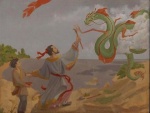
Khaimraj Seepersad- Member
 Re: American Bonsai at the NC Arboretum
Re: American Bonsai at the NC Arboretum
Khaimraj Seepersad wrote:Interesting, I looked at 2015 video of the American Hornbeam.
I believe the mistake made was in not having the elderly guy come and explain why he trained and pruned how he did.
The tree looked fine in the first part, but I don't believe Arthur's way agreed with it.
Guess now we wait for the tree to evolve over to the new trainer's way of seeing.
Perhaps another 10 years.
Laters.
Khaimraj
Agreed, I thought it looked pretty good before the pruning. But I suspect in a few years (10? maybe, maybe less) it will probably look better, once the finer branches grow back. The close-ups did suggest there were some funky branches that needed cutting back.

coh- Member
 Re: American Bonsai at the NC Arboretum
Re: American Bonsai at the NC Arboretum
Thanks, Alain!AlainK wrote:I thought that maybe some would find reading this a rticle a way to "branch out" from personal feuds:
http://www.japantimes.co.jp/culture/2016/02/25/arts/bonsai-worlds-black-sheep-aims-inject-cool-traditional-art-form/#.VtCLBeYyH7w... ....
Well, well, a craftsman he is. Peter Warren is also declaring to be a craftsman.
Is it modesty? Is it self-awareness?
Khaimraj are you around?

my nellie- Member
 Re: American Bonsai at the NC Arboretum
Re: American Bonsai at the NC Arboretum
Richard S wrote:Van
For the record there's a Bald Cypress (Taxodium distichum?) in Kyuzo Murata's Four Seasons of Bonsai book.
It's not a particularly fine example and Murata remarks that "The wayward branches of the Bald Cypress are unmanageable, but the delicate grace of the new green foliage more than compensates for the awkwardness".
There's also a Japanese Black Pine in the book styled in a what appears to be a kind of multi-trunk clump form. Not sure whether this is what you meant by "Japanese elements of design" in Black Pine bonsai though? It certainly doesn't look like most JBP bonsai you see but then there are no triangular maples with perfectly positioned horizontal branches in his book either.
I don't know whether this tells us anything of interest but you did ask (well, kind of).
Regards
Richard,
Richard,
I'm glad you brought up this book. It was my first bonsai book and still one of my favourites. It was very influential to me. It made me pay attention to nature first instead of style. Including things like grasses, wildflowers, there was more an emphasis on the simple and the overlooked part of nature that we usually step on as we rush through life to get to something more important.
Really profound when you consider the impact it can have on your general outlook. Since then I have continued to grow all kinds of things just as Murata suggested. Small ferns, mosses, tiny flowering plants etc. I believe these are important elements to keep you grounded and in touch with the reality of nature. Nature is more than trees. I also believe bonsai artists are missing out somehow if they fail to pay at least some attention to these things.
After a few years of looking at the more modern styling of trees, I had the idea that his trees were unrefined after looking back at the book. Now I'm feeling differently again. There was a real conscious effort to refrain from being overly intrusive to the material. He did not polish the bark on the junipers. He did not wire every twig onto the same plane in his pines. The result is a work which will probably remain refreshing to look at long after the ''shiny new'' modern works have long since become tedious.
The trick is to find the fine balance between being excessively obtrusive with the trees and letting them ''do their own thing'' in the pot.

MichaelS- Member
 Re: American Bonsai at the NC Arboretum
Re: American Bonsai at the NC Arboretum
Mike, I agree wholeheartedly with your assessment of Murata's trees.
While it was Van's comment about swamp Cypress that prompted me to pull that book off the shelf and take another look at it, it was very much the trees in that book which prompted me to question just how much I really know about Japanese bonsai, as opposed to the common western perception of it. The original may very well be more diverse than many of us have realised.
I also paused to wonder what response some of those trees might get if they were posted on IBC by a western "bonsai gardener", as Murata is described.
Some of them would no doubt be highly praised but others might well get pulled to pieces.
I also couldn't help wondering whether some of the questions that Murata's trees might raise wouldn't be rather similar to some of the questions that Dan Robinsons tree's raised. However, this is still very much Arthur's thread and as we have all been through the Dan Robinson controversy already I have no desire to be the one who takes us back there.
Regards
Richard
While it was Van's comment about swamp Cypress that prompted me to pull that book off the shelf and take another look at it, it was very much the trees in that book which prompted me to question just how much I really know about Japanese bonsai, as opposed to the common western perception of it. The original may very well be more diverse than many of us have realised.
I also paused to wonder what response some of those trees might get if they were posted on IBC by a western "bonsai gardener", as Murata is described.
Some of them would no doubt be highly praised but others might well get pulled to pieces.
I also couldn't help wondering whether some of the questions that Murata's trees might raise wouldn't be rather similar to some of the questions that Dan Robinsons tree's raised. However, this is still very much Arthur's thread and as we have all been through the Dan Robinson controversy already I have no desire to be the one who takes us back there.
Regards
Richard

Richard S- Member
 Re: American Bonsai at the NC Arboretum
Re: American Bonsai at the NC Arboretum
Mike,
the Murata books are always different, and there are quite a few. Was he not the Emperor's gardener ?
I agree with you on the quality of the work, probably will end up with my trees [ hopefully ] feeling more
like that.
Yes, I grow other than trees, just found a strange plant, resembles a conifer, but it crawls. Pretty green
colour as well. Learning how to grow.
Laters.
Khaimraj
the Murata books are always different, and there are quite a few. Was he not the Emperor's gardener ?
I agree with you on the quality of the work, probably will end up with my trees [ hopefully ] feeling more
like that.
Yes, I grow other than trees, just found a strange plant, resembles a conifer, but it crawls. Pretty green
colour as well. Learning how to grow.
Laters.
Khaimraj

Khaimraj Seepersad- Member
 Re: American Bonsai at the NC Arboretum
Re: American Bonsai at the NC Arboretum
Presently in America, Bonsai is in a state of flux, trying to find itself artistically. We seem to have come to a point where the art has become polarized between two major schools of thought on the subject, and both are supported by some incredible work.
The traditionalist school, pioneered more or less by Vill Valvanis in New York has culminated over decades of work and publications by instituting a national show every two years. Bill's focus is on traditional styles demonstrated by our Japanese heritage in the art practiced in America since 1946, more or less. You can make all of the arguments you wish about the roots of bonsai, put simply, if it had not been for America's exposure to bonsai in Japan after the Second World War, bonsai probably would not have a world wide presence, and we probably would not be talking about it today.
The second school is more or less represented by Ryan Neil of Oregon; Bonsai Mirai. Oddly, these beautiful and for the most part collected trees, are the product of the vision of the nursery's founder Ryan Neil. However if it were not for Mr. Ryan's apprenticeship in Japan under the worlds recognized most influential master, Masahiko Kimura, Mr Ryan may not have acquired the skill to realize his vision of what could be called Modern Bonsai. So to both movements find their roots in Japan.
Us simple mortals are faced with choosing between to disciplines in bonsai. I am going to leave this at this point just to see what floats to the surface.
The traditionalist school, pioneered more or less by Vill Valvanis in New York has culminated over decades of work and publications by instituting a national show every two years. Bill's focus is on traditional styles demonstrated by our Japanese heritage in the art practiced in America since 1946, more or less. You can make all of the arguments you wish about the roots of bonsai, put simply, if it had not been for America's exposure to bonsai in Japan after the Second World War, bonsai probably would not have a world wide presence, and we probably would not be talking about it today.
The second school is more or less represented by Ryan Neil of Oregon; Bonsai Mirai. Oddly, these beautiful and for the most part collected trees, are the product of the vision of the nursery's founder Ryan Neil. However if it were not for Mr. Ryan's apprenticeship in Japan under the worlds recognized most influential master, Masahiko Kimura, Mr Ryan may not have acquired the skill to realize his vision of what could be called Modern Bonsai. So to both movements find their roots in Japan.
Us simple mortals are faced with choosing between to disciplines in bonsai. I am going to leave this at this point just to see what floats to the surface.
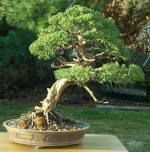
Vance Wood- Member
 Re: American Bonsai at the NC Arboretum
Re: American Bonsai at the NC Arboretum
A little bit about Kyuzo Murata, http://www.magiminiland.org/KMurata.html .
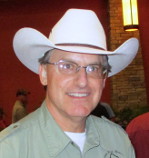
Robert J. Baran- Member
 Re: American Bonsai at the NC Arboretum
Re: American Bonsai at the NC Arboretum
Yes. We are repeating our selves, redundantly, over and over again and all saying the same thing without adding new thoughts (or even clichés) to the pot we are trying to stir. Maybe we should all take a step back for a bit and just THINK. !
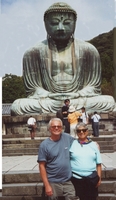
JimLewis- Member
 Re: American Bonsai at the NC Arboretum
Re: American Bonsai at the NC Arboretum
Thank you Robert!!!
If you would found a new idea, you have to find a way, then study and think.
Bonsai being a hobby will not pay for the time to do so.
Chances are, a very wealthy Artist / Philosopher / Bonsai grower is going to come forward with the answer.
The work / book will then cause untold problems for Hobbyist as Bonsai will become - the Art of Bonsai
Jim, please don't frustrate yourself.
Most of these folk will never do anything towards - study - and will keep on talking.
Jim, relax and enjoy your efforts.
Let's call the gods - the Impressionists [ Van Gogh ] down to help out.
Laters.
Khaimraj
* As I have said before - Bonsai has to be imaged into Holograms - to meet the standard set by the durabilty of oil paintings or sculpture.
So how come we have - Floating bonsai [ Magneto lives ] and no one is doing any work on Holographic images for museums of Bonsai ??????
If you would found a new idea, you have to find a way, then study and think.
Bonsai being a hobby will not pay for the time to do so.
Chances are, a very wealthy Artist / Philosopher / Bonsai grower is going to come forward with the answer.
The work / book will then cause untold problems for Hobbyist as Bonsai will become - the Art of Bonsai
Jim, please don't frustrate yourself.
Most of these folk will never do anything towards - study - and will keep on talking.
Jim, relax and enjoy your efforts.
Let's call the gods - the Impressionists [ Van Gogh ] down to help out.
Laters.
Khaimraj
* As I have said before - Bonsai has to be imaged into Holograms - to meet the standard set by the durabilty of oil paintings or sculpture.
So how come we have - Floating bonsai [ Magneto lives ] and no one is doing any work on Holographic images for museums of Bonsai ??????

Khaimraj Seepersad- Member
 Re: American Bonsai at the NC Arboretum
Re: American Bonsai at the NC Arboretum
Robert J. Baran wrote:A little bit about Kyuzo Murata, http://www.magiminiland.org/KMurata.html .
Thanks for the link Robert. It's a great read. About the Bonsai Fudo, I got this picture on BBG site couple years ago, I think the visit was in 2012.

As stated in my previous post, Emotional connection is so important in bonsai design. Not only to the artists who create but also in this case, a future generation to follow. Bonsai, like everything else, in order to progress to higher plateau it has to rely on a solid foundation.
It's also noteworthy to revisited Murata statement on his tour in 1975: Murata's closing remarks to ABS "Again, I wish to emphasize that bonsai is not a mere sketch of nature but a reflection of the heart of the creator. Please create your own Americanized bonsai and fill the world with this peaceful art. Sayonara, I shall see you in Tokyo."
So can we create Americanized bonsai? By going back to Arthur question: If we strip all of Japanese elements, it's still a bonsai? To me it is a definite yes. Here is one of the example:


A Bald Cypress by Guy Guidry, the only Japanese element I could find maybe the pot. Other than that it is true American with all the essences of great southern heritage that we can hang our hat on and be proud. Of course there are many other examples of great American bonsai and other parts of the world that can be reflected by their heritage and culture. Please upload more examples so we can definitely agree that bonsai has the foundation of Japan but has progressed much greater than the boundary of Japan that reflect the hearts and the heritage of creators that are not in Japan.
van
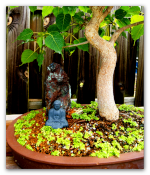
Van- Member
 Re: American Bonsai at the NC Arboretum
Re: American Bonsai at the NC Arboretum
Van,
To my eyes I see Japanese influence all over this tree. From the pics I've seen most mature swampies have a very irregular branch arrangement with most either upright or horizontal rather than neatly weeping as in this example. Tops are also usually rather flat (although this can vary of course) but I think there may be better (that is to say more natural in appearance) examples of this species as bonsai.
https://www.google.com.au/search?q=swamp+cypress&biw=1536&bih=728&source=lnms&tbm=isch&sa=X&sqi=2&ved=0ahUKEwiBkuL-mJnLAhUBN5QKHRynCgYQ_AUIBigB#tbm=isch&q=old+swamp+cypress+tree
Also, let's discuss exactly what the Japanese elements which we seek to strip actually are......I feel that some general ones should be held.
To my eyes I see Japanese influence all over this tree. From the pics I've seen most mature swampies have a very irregular branch arrangement with most either upright or horizontal rather than neatly weeping as in this example. Tops are also usually rather flat (although this can vary of course) but I think there may be better (that is to say more natural in appearance) examples of this species as bonsai.
https://www.google.com.au/search?q=swamp+cypress&biw=1536&bih=728&source=lnms&tbm=isch&sa=X&sqi=2&ved=0ahUKEwiBkuL-mJnLAhUBN5QKHRynCgYQ_AUIBigB#tbm=isch&q=old+swamp+cypress+tree
Also, let's discuss exactly what the Japanese elements which we seek to strip actually are......I feel that some general ones should be held.
Last edited by MichaelS on Sun Feb 28, 2016 12:58 am; edited 1 time in total

MichaelS- Member
 Re: American Bonsai at the NC Arboretum
Re: American Bonsai at the NC Arboretum
Van,
those of us of Chinese heritage would mention - Lingnan and names like Hu Yunhua or Wu Yee Sun.
Great swamp cypress by the way, Mr. Guidry also has an amazing Hackberry, you should look for that as well.
Never forget Vaughn Banting, either.
Time for another - 50 Great American Trees - book.
Laters.
Khaimraj
Mike, there is a young fellah, name of Seth [ aka Carp ], over on Bnut, he manages his grandfather's collection, had some amazing images
of Swamp Cypresses that have the look.
Take a looksee.
those of us of Chinese heritage would mention - Lingnan and names like Hu Yunhua or Wu Yee Sun.
Great swamp cypress by the way, Mr. Guidry also has an amazing Hackberry, you should look for that as well.
Never forget Vaughn Banting, either.
Time for another - 50 Great American Trees - book.
Laters.
Khaimraj
Mike, there is a young fellah, name of Seth [ aka Carp ], over on Bnut, he manages his grandfather's collection, had some amazing images
of Swamp Cypresses that have the look.
Take a looksee.

Khaimraj Seepersad- Member
 Re: American Bonsai at the NC Arboretum
Re: American Bonsai at the NC Arboretum
MichaelS wrote:Van,
To my eyes I see Japanese influence all over this tree. From the pics I've seen most mature swampies have a very irregular branch arrangement with most either upright or horizontal rather than neatly weeping as in this example. Tops are also usually rather flat (although this can vary of course) but I think there may be better (that is to say more natural in appearance) examples of this species as bonsai.
https://www.google.com.au/search?q=swamp+cypress&biw=1536&bih=728&source=lnms&tbm=isch&sa=X&sqi=2&ved=0ahUKEwiBkuL-mJnLAhUBN5QKHRynCgYQ_AUIBigB#tbm=isch&q=old+swamp+cypress+tree
I agree. That is the point I have been trying to make. Our vision of bonsai is not so one sided as it once was. We see the natural possibilities in our native trees and we see the stylistic possibilities of applying some Japanese sensibilities to it. The only thing that really bothers me are those that say we are just saying the same stuff over and over, when I don't think we are. However those same individuals do not contribute to the discussion other than to criticize it. Every body to their opinion.

Vance Wood- Member
 Re: American Bonsai at the NC Arboretum
Re: American Bonsai at the NC Arboretum
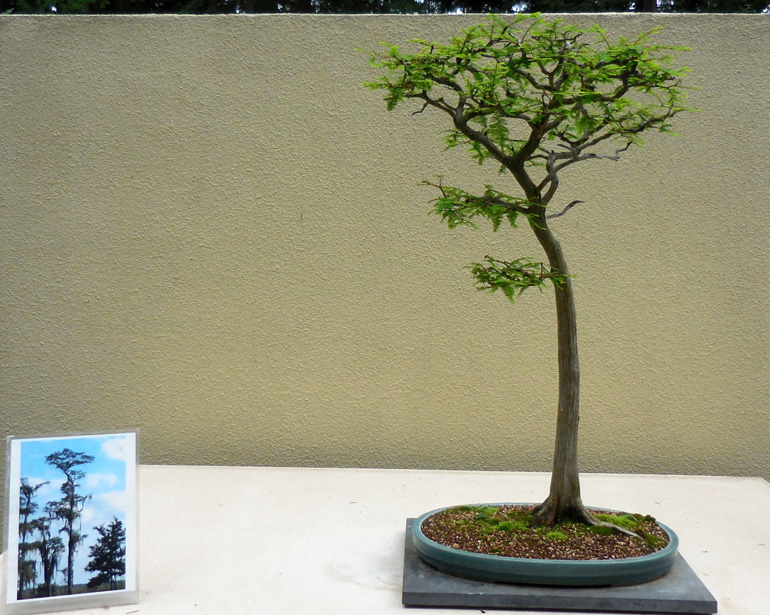
Banting Cypress in the Pacific Rim collection
Funny you mention William Valivanis being a proponent of Japanese style; very true.
But he featured this tree, decidedly Southern US style, in Fine Bonsai
I want to have a tree like this in my collection; of course, no one is limiting me to design trees found in my region only, right. That should not be misunderstood.
Edit: I forgot, I wanted to state that I believe the great Japanese masters don't follow all those rules.
And, I share Vance's disdain for those who say "Let's just drop it"
Dave Leppo- Member
 Re: American Bonsai at the NC Arboretum
Re: American Bonsai at the NC Arboretum
Maybe a good way to tell if you include Japanese style bonsai in your garden: Do you display any stone lanterns? 
Here's some more reading if you have time:Colin Lewis "Trees vs. Bonsai"
Here's some more reading if you have time:Colin Lewis "Trees vs. Bonsai"
Last edited by Dave Leppo on Sun Feb 28, 2016 3:10 am; edited 1 time in total
Dave Leppo- Member
 Re: American Bonsai at the NC Arboretum
Re: American Bonsai at the NC Arboretum
Dave Leppo wrote:
I want to have a tree like this in my collection; of course, no one is limiting me to design trees found in my region only, right. That should not be misunderstood.
Of course not. We have been in awe of Japanese refinement with their species for so long and many try to mimic their styles at the abandonment of our native species. I think it is about time that many people realize the great potential and diversification of our native species that we can carve out and make an identity for our self. Thanks.
van

Van- Member
 Re: American Bonsai at the NC Arboretum
Re: American Bonsai at the NC Arboretum
Like so many things that have a point of origin their appeal being universal, will take them beyond that point into locations which will of necessity cause them to change and adapt. For the most Part, bonsai as we were first introduced to the art, was a practice of a temperate climate where Conifers were common and loved. As the idea and love for bonsai grew and moved into tropical climates the art of necessity morphed and adapted to the local species the art encountered.
These species caused the execution of the art to change both because of the species involved but, the artists that lived in these environments had different ideas of how trees grow, and the artistic sensibilities were different. As bonsai grows and migrates into different cultures and ways of thinking the expression of the art will change and reflect that migration. It takes a while but eventually Bonsai takes on a presence that reflects the cultures it is grown in. It will be different but it will still be bonsai and many of the things that make bonsai pleasing and worthy of emulation will remain.
These species caused the execution of the art to change both because of the species involved but, the artists that lived in these environments had different ideas of how trees grow, and the artistic sensibilities were different. As bonsai grows and migrates into different cultures and ways of thinking the expression of the art will change and reflect that migration. It takes a while but eventually Bonsai takes on a presence that reflects the cultures it is grown in. It will be different but it will still be bonsai and many of the things that make bonsai pleasing and worthy of emulation will remain.

Vance Wood- Member
 Re: American Bonsai at the NC Arboretum
Re: American Bonsai at the NC Arboretum
Dave Leppo wrote:
Here's some more reading if you have time:Colin Lewis "Trees vs. Bonsai"
This excerpt from him is so powerful:
**************************************************************************************************
At the very highest levels of bonsai, in both the east and the west, imagination and creativity are still very much alive, but down here where most of us live it seems it is being driven out by this cancerous preconception of what a bonsai should look like. There seem to be no younger emerging Nick Lenzes or Vaughn Bantings to pioneer bonsai images of native species or to further westernize the practice and aesthetics of the art.
It is not the bonsai master, not the itinerant bonsai journeyman, and certainly not the commercial market traders, but the committed, motivated and talented enthusiasts who hold the future evolution of bonsai art in their hands. It is they who are free to experiment, create, push the boundaries, be adventurous. They have no reputation to build, no ego to boost, no big investment to lose apart from time. It is they, and only they, who can preserve the variety of style and species, adding more as time goes by. It is they who are most likely to practice bonsai as an expressive art, forever pushing the boundaries, rather than as an investment or a performance. All they need to do is believe in their own dreams, set their sights on the highest goal and, take the longest path to reach it.
*************************************************************************************************
I hope, as a new generation in pursuing this art, we take to heart the great wisdom from him. Thanks again.
van

Van- Member
 Re: American Bonsai at the NC Arboretum
Re: American Bonsai at the NC Arboretum
Dan W. wrote:I understand that there are plenty of deciduous trees shaped like pine trees, and that you don't like overly refined trees that look like "broccoli" as Walter puts it. -- But I spend vast amounts of time looking at bonsai from all over the world, admittedly online for the most part, and I see many trees by the Japanese that I would consider very much tree-like, or naturalistic if you will.
Sure, a lot of Japanese trees are naturalistic. There is no such thing as THE Japanese bonsai. They have all sorts of styles. Most of the them use nursery material for broadleaved trees. In Europe and in South East Asia, notably in Indonesia they use a lot of old collected broadleaved trees. These trees already have much character and when they are styled they soon look ancient and wild. In Europe this is preferred by many over the domesticated, nice 'beautiful`, 'licked' look of many Japanese trees. But what is better?? Why not have both? I do in my collection.
Dan W. wrote:First up is this Japanese Maple clump. I don't think it's fair to consider the pot, the display or even the species, because that is most definitely going to reflect on the culture of the individual who displayed it. If the tree were imported to the US today we could take it out of the Japanese pot and put it into any American one. If that were to happen; what about this tree's styling makes it Japanese vs. Naturalistic? I'm very curious to hear your thoughts on this, and yours Walter. For my understanding, not for any confrontational reasons.
I see this maple clump as naturalistic in the typical Japanese fashion. This mainly comes from this tree has been formed from a cutting as bonsai right from the beginning.

Walter Pall- Member
 Re: American Bonsai at the NC Arboretum
Re: American Bonsai at the NC Arboretum
Dan W. wrote:
I'm copying the same paragraph just so that no-one needs to jump back and forth to my questions: "I don't think it's fair to consider the pot, the display or even the species, because that is most definitely going to reflect on the culture of the individual who displayed it. If the tree were imported to the US today we could take it out of the Japanese pot and put it into any American one. If that were to happen; what about this tree's styling makes it Japanese vs. Naturalistic? I'm very curious to hear your thoughts on this, and yours Walter. For my understanding, not for any confrontational reasons."
Even if it's the dense ramification that's not desired in Naturalistic design, what do you think about the basic trunk and branch structure of this tree?
I think it is a very good bonsai. It is clearly in the naturalistic style. It has been trained for many decades and one can see it. The artist(s) did not try to form wild ancient realistic tree but rather an idealized, smooth beautiful tree. Nothing wrong with that. It is the ususal Japanese way of doing naturalsitic styling. I call this the idealistic version of naturalistic style.
If one posts this hornbeam as example and states that it is much more refined and much better than the naturalistic trees from Europe or Indonesia then we compare a tree which has been style for fifty years with one they has been worked on for five years. Is that fair? The attached oriental hornbeam was collected in 2010 (!!!!) Now, five growing seasons later this is the result. I think one should foresee what this tree might look like in 45 years and then compare it to the Japanese hornbeam. Or rather find a picture of the Japanese tree when it had been in training for five years and compare it with this one. I call this the realistic version of naturalistic style.



Walter Pall- Member
 Re: American Bonsai at the NC Arboretum
Re: American Bonsai at the NC Arboretum
Thank you for the responses on these two trees Walter. I think that helps me to see how you are categorizing the Naturalistic style better.
I hope you don't think that I was comparing your Oriental hornbeam to others. I find yours to be a stunning image of an ancient tree, even though it's still under construction! It has come along incredibly well for only being collected 5 years ago!! Your trees are better every time you post them.
I hope you don't think that I was comparing your Oriental hornbeam to others. I find yours to be a stunning image of an ancient tree, even though it's still under construction! It has come along incredibly well for only being collected 5 years ago!! Your trees are better every time you post them.

Dan W.- Member
Page 1 of 9 • 1, 2, 3, 4, 5, 6, 7, 8, 9 
 Similar topics
Similar topics» American Bonsai at the NC Arboretum
» WISTERIA BONSAI AT INTERNATIONAL BONSAI ARBORETUM
» Ashville arboretum bonsai
» Trip to the Rochester Arboretum
» Carolina Bonsai Expo @ NC Arboretum
» WISTERIA BONSAI AT INTERNATIONAL BONSAI ARBORETUM
» Ashville arboretum bonsai
» Trip to the Rochester Arboretum
» Carolina Bonsai Expo @ NC Arboretum
Page 1 of 9
Permissions in this forum:
You cannot reply to topics in this forum






